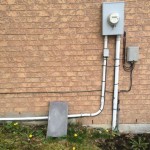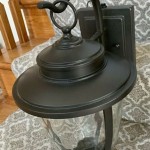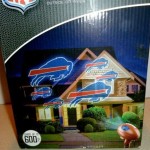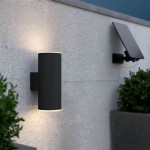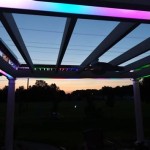Design Your Own Outdoor Kitchen
An outdoor kitchen is a dream for many homeowners, offering a space to entertain guests, enjoy fresh air, and cook delicious meals. Designing your own outdoor kitchen can be an exciting process, allowing you to tailor the space to your exact needs and preferences. From choosing the right appliances to selecting materials and layout, there’s a lot to consider. This article will guide you through the key steps to design your own outdoor kitchen, ensuring a functional and aesthetically pleasing space that you’ll love for years to come.
Define Your Needs and Budget
Before diving into the design process, it's crucial to clearly define your needs and budget. Consider the size of your outdoor space, the types of meals you plan to prepare, and how often you envision using the kitchen. Do you want a simple grilling station or a fully equipped cooking area with a refrigerator, sink, and countertop space?
Establishing a budget upfront will prevent surprises and ensure you stay within your financial limits. Determine how much you're willing to spend on appliances, countertops, cabinets, and other materials. This will help you prioritize features and make informed decisions during the design process.
Layout and Design
Once you have a clear understanding of your needs and budget, you can begin planning the layout and design of your outdoor kitchen. There are several factors to consider:
- Space: Measure your outdoor space carefully to determine the available area for your kitchen. Consider the size of the appliances and work surfaces you need, as well as any walkways or seating areas.
- Traffic flow: Ensure that the layout facilitates easy movement between appliances and work areas, minimizing bottlenecks and maximizing efficiency.
- Accessibility: Design your kitchen to be easily accessible for everyone, including those with mobility limitations. This might involve creating wider walkways, using comfortable seating, and strategically positioning appliances.
- Climate: Consider your local climate and how it might affect your outdoor kitchen. If you live in a region with harsh winters, choose weather-resistant materials and consider incorporating a roof or cover for shelter.
You can utilize a variety of design tools to visualize your outdoor kitchen. Consider:
- Software: Design programs like SketchUp or RoomSketcher offer intuitive interfaces for creating floor plans and 3D models.
- Drawings: Sketching a rough layout on paper can be helpful for visualizing the space and experimenting with different arrangements.
- Professional Design: If you are looking for a more comprehensive approach, consider hiring a professional landscape architect or kitchen designer to create a custom design for your outdoor kitchen.
Appliances and Materials
Choosing the right appliances and materials is essential for building a functional and stylish outdoor kitchen.
Appliances
The appliances you choose will depend on your cooking habits and the types of meals you plan to prepare. Consider the following options:
- Grills: Gas, charcoal, or pellet grills offer different cooking styles and price points. Consider your preferred cooking method, fuel type, and desired features.
- Refrigerator: A small outdoor refrigerator can be a convenient addition for storing drinks, snacks, and ingredients. Look for models specifically designed for outdoor use to withstand weather elements.
- Sink: A sink is crucial for cleaning up and rinsing ingredients. Choose a durable and weather-resistant material, such as stainless steel or composite.
- Outdoor oven: Consider an outdoor oven for baking, roasting, or pizza making. Choose a model that fits your needs and budget.
- Other Appliances: Other appliances like a mini-fridge, ice maker, or beverage dispenser can be added to enhance your outdoor cooking experience.
Materials
Materials for your outdoor kitchen should be durable, weather-resistant, and aesthetically pleasing. Here are some popular choices:
- Countertops: Concrete, tile, granite, and composite materials offer durability and a variety of styles. Choose a material that complements your design and withstands the elements.
- Cabinets: Consider using waterproof and weather-resistant materials like stainless steel, aluminum, or marine-grade plywood for cabinets. Choose a finish that complements your overall design aesthetic.
- Flooring: Select flooring materials that are slip-resistant, durable, and weather-resistant such as pavers, concrete, or composite decking.
When selecting materials, consider the style you want to achieve. Materials like wood, stone, and brick can create a rustic look while stainless steel and modern materials offer a more contemporary feel.
Designing your own outdoor kitchen can be a rewarding process. By taking the time to define your needs, plan the layout, and select the right appliances and materials, you can create a functional and aesthetically pleasing outdoor space that you'll enjoy for years to come. Remember to consider your budget, climate, and personal preferences throughout the design process to ensure your outdoor kitchen meets your specific needs and lifestyle.

16 Outdoor Kitchen Design Ideas And Pictures Alfresco Styles

21 Best Outdoor Kitchen Ideas For Any Budget

36 Ideas For Building The Ultimate Outdoor Kitchen Extra Space Storage

Backyard Covered Outdoor Kitchen Ideas Forbes Home

Outdoor Kitchen Ideas 10 Designs To Copy Bob Vila

Designing An Outdoor Kitchen Garden

23 Outdoor Kitchen Ideas Best Designs For Inspiration

Diy Outdoor Kitchen At Home With The Barkers

Outdoor Kitchen Red12 Designs

Outdoor Kitchen Layouts Plans For Function Style
Related Posts
